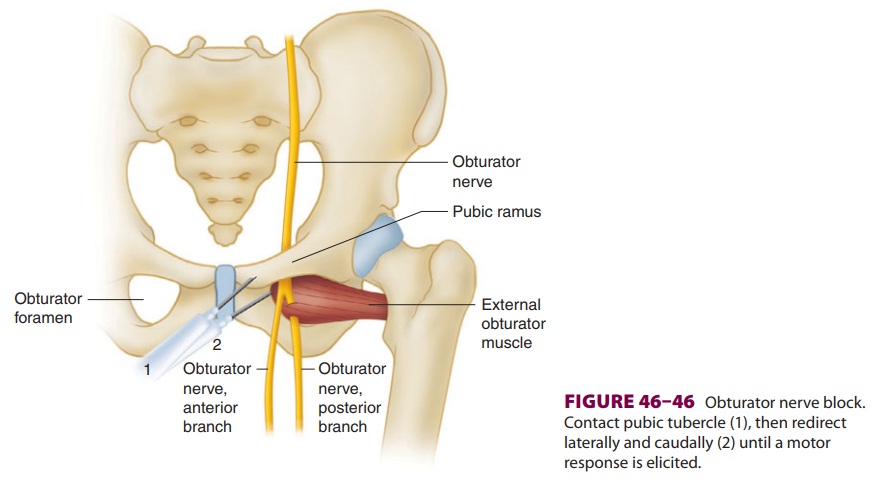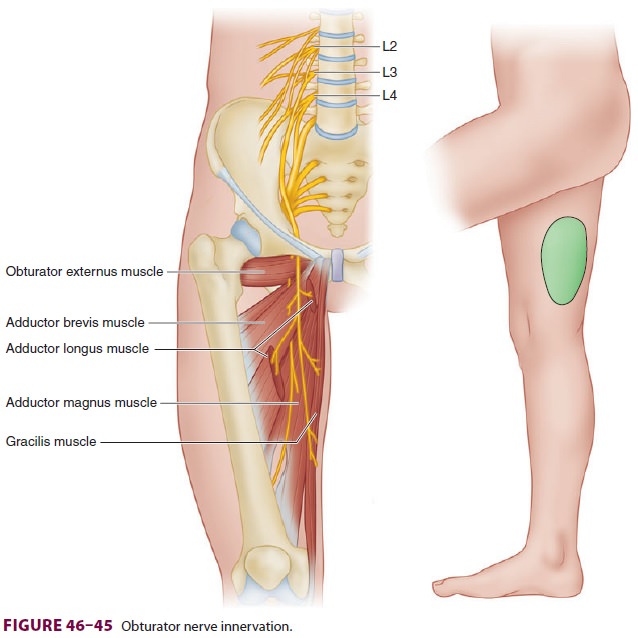Chapter: Clinical Anesthesiology: Regional Anesthesia & Pain Management: Peripheral Nerve Blocks
Lower Extremity Peripheral Nerve Blocks: Obturator Nerve Block

Obturator Nerve Block
A block of the obturator nerve is usually
required for complete anesthesia of the knee and is most often performed in
combination with femoral and sciatic nerve blocks for this purpose. The
obturator nerve contributes sensory branches to the hip and knee joints, a
variable degree of sensation to the medial thigh, and innervates the adductors
of the hip (Figure 46–45). This nerve exits the
pelvis and enters the medial thigh through the obturator fora-men, which lies
beneath the superior pubic ramus. After identification of the pubic tubercle, a
long (10-cm) block needle is inserted 1.5 cm inferior and 1.5 cm lateral to the
tubercle. The needle is advanced posteriorly until bone is contacted ( Figure
46–46). Redirecting laterally and caudally, the
needle is advanced an additional 2–4 cm until a motor response (thigh
adduction) is elicited and main-tained below 0.5 mA. Following careful aspiration
for the nonappearance of blood, 15–20 mL of local anesthetic is injected.


Related Topics